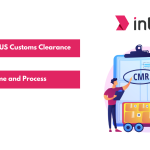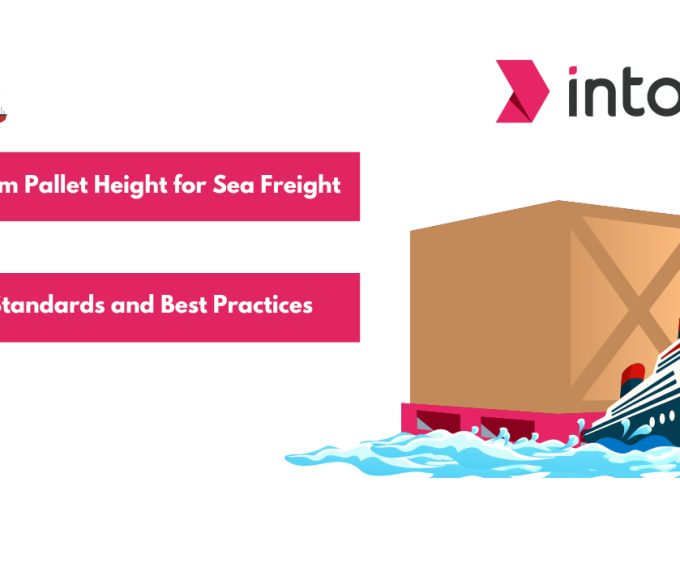Understanding the complexities of customs clearance and import duties when exporting goods to or from India can ensure a seamless process and avoid costly delays. A clear grasp of the custom clearance charges for export ensures businesses can avoid unnecessary hurdles and keep their operations running efficiently. Customs clearance involves several steps, including the inspection of goods, payment of duties, and submission of necessary documentation, all of which must be handled properly to prevent disruptions.
Non-compliance with these regulations can impose heavy fines, shipment seizures, or severe delays that disrupt business. This article outlines the essential details of customs clearance charges and import duties in India, offering practical insights for companies looking to avoid penalties and maintain a streamlined supply chain.
Customs Clearance Process in India
The customs clearance process in India requires businesses to follow several essential steps to ensure smooth import and export operations. Here’s a breakdown of the key stages:
- Submission of Import/Export General Manifest (IGM/EGM): When goods arrive at or leave the port, the carrier must submit the Import General Manifest (IGM) or Export General Manifest (EGM). This document contains detailed information about the cargo and ensures legal compliance with Indian customs regulations.
- Filing a Bill of Entry or Shipping Bill through ICES: Exporters or importers must file a Bill of Entry (for imports) or a Shipping Bill (for exports) using the Indian Customs EDI System (ICES). This filing declares the goods and ensures that they meet customs regulations for entry or exit.
- Classification and Valuation of Goods based on HSN Codes: Properly classifying goods using Harmonized System of Nomenclature (HSN) codes is essential for calculating accurate duties and taxes. Misclassification can lead to penalties or delays. To simplify this process, businesses can use tools like Intoglo’s AI-powered HS Code Scanner, which provides US-specific HS codes and tariffs, ensuring precise and efficient classification. This advanced solution reduces the risk of errors, saves time, and prevents costly disruptions.
- Customs Inspection: Customs officials inspect the goods to verify their accuracy against the information declared. They ensure compliance with Indian laws and regulations, including safety standards and import restrictions.
- Clearance and Payment of Duties: Once customs officers approve the goods, the business pays the necessary import/export duties. Upon payment, customs issues a clearance certificate, allowing the goods to proceed further.
- Transportation to Final Destination: The goods are transported to their final destination after receiving clearance. Quick transportation avoids storage costs and unnecessary delays, ensuring the supply chain remains uninterrupted.
Carefully adhering to these steps enables businesses to avoid complications, maintain compliance, and minimize the risk of expensive delays.
Documents Required for Customs Clearance
For a smooth customs clearance process in India, businesses must prepare and submit various vital documents. Here’s a breakdown of the essential documents required:
- Bill of Entry (imports) or Shipping Bill (exports) filed electronically: The Bill of Entry (for imports) or Shipping Bill (for exports) is the primary document that customs officials use to process the clearance of goods. It is filed electronically through the Indian Customs EDI System (ICES) and details the nature, quantity, and value of the goods.
- Commercial Invoice: This document outlines the transaction between the buyer and seller, providing information on the value, terms of sale, and a description of the goods. Customs authorities rely on the commercial invoice to determine applicable duties and taxes.
- Packing List: The packing list outlines crucial information about how the goods are packed, including the number of packages, weight, and dimensions. This helps customs officials verify the shipment against the Bill of Entry or Shipping Bill.
- Bill of Lading or Airway Bill: The Bill of Lading (for sea freight) or Airway Bill (for air freight) serves as proof of shipment, outlining the terms of carriage and details of the goods being transported.
- Import/Export License: An import or export license is necessary for certain restricted or regulated goods. This document ensures that the goods comply with relevant laws and regulations before entering or leaving the country.
- Certificate of Origin: This document applies to the country where the goods were produced, which can affect the applicable duties and taxes based on trade agreements between countries.
- Insurance Certificate: The Insurance Certificate proves that the goods are insured during transit, protecting the shipment against potential losses or damages. This document is essential for mitigating financial risks during international trade.
Properly submitting these documents ensures that businesses comply with customs regulations, avoid delays, and minimize additional costs.
Also Read: OCR and Its Impact on Freight Forwarding and Shipping Process
Understanding Custom Clearance Charges
Understanding custom clearance charges for export and import is crucial for businesses engaged in international trade to manage costs effectively. Below is a breakdown of the various charges involved in customs clearance:
- Customs Duty: Customs duty is the primary tax imposed on imported goods and is calculated based on HSN codes. The amount depends on the goods’ type, value, and origin. Different products have varying duty rates, which customs officials assess during clearance.
- Goods and Services Tax (GST): Imported goods are subject to GST in addition to customs duties. The rate of GST varies depending on the product category, and this tax is applied to imports and exports to ensure compliance with Indian taxation laws.
- Handling and Processing Fees: Customs authorities charge handling and processing fees to cover administrative and operational costs related to managing shipments, such as paperwork and logistical support.
- Inspection and Examination Fees: If customs officials determine that a physical inspection of goods is required, businesses must pay inspection and examination fees. This charge covers ensuring that the shipment complies with safety and legal standards.
- Brokerage Fees: Many businesses use customs brokers to facilitate the clearance process. Brokerage fees cover these professionals’ services, including filing necessary documents, ensuring compliance, and speeding up clearance.
- Storage Fees: Businesses must pay storage fees if goods are held in a customs warehouse for an extended period. These fees accrue daily, so expediting the customs clearance process is essential to avoid additional costs.
- Port Charges: Port charges are imposed for using port facilities and services, such as cargo handling and transportation. These fees vary by port and are important to the overall customs clearance cost.
Understanding and planning for these charges can help businesses budget more effectively, avoid unexpected costs, and ensure smooth and timely operations in international trade.
Breakdown of Custom Clearance Charges
Here’s a breakdown of the key custom clearance charges businesses should be aware of when importing goods into India:
Basic Customs Duty (BCD)
This standard duty is imposed on goods entering India and is calculated based on the product type, value, and origin. The rate varies depending on the Harmonized System of Nomenclature (HSN) code classification.
Integrated Goods and Services Tax (IGST)
In addition to BCD, imported goods are subject to IGST, which is levied at varying rates based on the product category. IGST applies to the total value of the imported goods, including BCD and any other applicable duties.
Social Welfare Surcharge
This surcharge is calculated as a percentage of the Basic Customs Duty, usually around 10%, and is collected to fund social welfare programs in India. It is applied on top of the BCD.
Anti-dumping Duty
Anti-dumping duty is levied when imported goods are priced lower than the domestic market value to protect local industries from unfair trade practices. This charge helps balance competition for local manufacturers.
Safeguard Duty
This temporary duty is applied to imports that threaten domestic industries. It prevents sudden surges in imports from harming the local economy.
Customs Handling Fee
Customs authorities charge a handling fee to cover the administrative and logistical costs of processing and clearing shipments at the port.
Compensation Cess
Applied to specific products like luxury goods and tobacco, a compensation cess is imposed in addition to IGST to compensate states for revenue losses caused by implementing GST.
Awareness of these charges helps businesses manage costs effectively and ensures compliance with Indian customs regulations during import.
Also Read: Understanding Different Types of Freight Charges: On-Carriage and Pre-Carriage
Things to Keep in Mind for Successful Customs Clearance
For smooth and successful customs clearance, businesses must consider several key factors. Here’s a detailed discussion of important considerations:
Self-Assessment and Understanding of Duties
Businesses must stay informed about the duties and taxes applicable to their goods, such as customs duties, GST, and other surcharges. Conducting a self-assessment helps ensure accurate payment, avoid disputes, and streamline the clearance process.
Importance of Accurate and Complete Documentation
Submitting correct and complete documents is critical to avoid delays and penalties. Incomplete or inaccurate paperwork, such as missing bills of entry or incorrect commercial invoices, can lead to prolonged inspections, additional fees, or shipment seizures.
Proactive Communication with Customs Authorities
Maintaining open and proactive communication with customs officials can help businesses resolve issues faster. Quick clarification can prevent unnecessary delays if any discrepancies arise, facilitating smoother clearance.
Role of Customs Brokers or Freight Forwarders
Customs brokers and freight forwarders are essential to the clearance process, managing documentation, coordinating with customs authorities, and ensuring regulatory compliance. Their expertise helps businesses avoid costly errors and delays.
Timing Considerations for Document Preparation and Inspections
Proper timing is essential for the smooth flow of goods. Businesses should ensure all documents are prepared in advance, considering inspection schedules. Delays in document submission or inspections can result in higher storage costs and extended transit times.
By taking care of these elements, businesses can ensure efficient custom clearance charges for export and avoid unexpected costs or delays in their global trade operations.
Conclusion
Understanding custom clearance charges for export and import duties in India is vital for businesses engaged in international trade. Proper planning, documentation, and compliance help avoid delays and unexpected costs. However, the process can still be complex, where professional assistance becomes invaluable. Partnering with a service provider like Intoglo offers numerous benefits, ensuring smoother and more efficient export and import operations.
Intoglo’s FCL service from India to the USA streamlines shipping. In contrast, additional key offerings, such as 10 free days at US ports with premium shipping lines and expert customs brokers, help reduce costs and avoid delays. With services like Customs Bond Services, customs entry before shipment arrival in the USA, and dedicated CHAs at all major ports of India, businesses benefit from faster processing and reduced risk.
The in-house compliance team ensures that all regulatory requirements are met, and their express clearance facilities further expedite the customs process. Using these professional services allows businesses to concentrate on their core operations while leaving the complexities of customs clearance to reliable experts, ensuring seamless global trade and timely deliveries.









Leave a comment